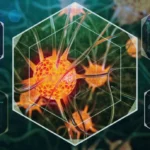Peripheral neuropathy is a debilitating condition that affects millions of people. Traditional treatment methods often focus on managing these symptoms with medications like pain relievers, antidepressants, or anti-seizure drugs for Regenerative Medicine. While these can offer temporary relief, they don’t address the underlying issue, damaged or deteriorating nerves.
Regenerative medicine takes a different approach. Instead of masking symptoms, it aims to repair and restore nerve function by targeting the root cause of neuropathy. This innovative and evolving field has shown great promise in improving outcomes and quality of life for individuals suffering from nerve damage.
What Causes Neuropathy?
Neuropathy can result from a variety of causes, including:
- Diabetes (diabetic neuropathy)
- Autoimmune disorders
- Infections
- Chemotherapy
- Injury or trauma
- Vitamin deficiencies
- Toxin exposure
Regardless of the cause, the result is the same: damaged peripheral nerves that struggle to transmit signals between the brain, spinal cord, and the rest of the body. Over time, this leads to worsening symptoms and, in severe cases, permanent disability.
Explore how this related post turns simple ideas into bold, actionable insights.
How Regenerative Medicine Works
Regenerative medicine focuses on healing and regeneration at the cellular level, using treatments that activate the body’s own repair mechanisms. When it comes to neuropathy, this means restoring blood flow, reducing inflammation, and stimulating nerve tissue repair.
Common regenerative therapies include:
- Platelet-Rich Plasma (PRP): Concentrated platelets from the patient’s own blood are injected near damaged nerves to stimulate healing and reduce inflammation.
- Stem Cell Therapy: Stem cells have the unique ability to develop into specialized cells. When introduced to damaged nerves, they may support regeneration and functional recovery.
- Low-Level Laser Therapy (LLLT): This non-invasive treatment uses light energy to promote cellular repair and improve circulation to affected nerves.
- Electromagnetic Therapy: Targeted electromagnetic pulses help stimulate nerve function and support the healing process.
Addressing the Root Cause, Not Just the Symptoms
One of the key benefits of regenerative medicine is its ability to target the underlying cause of nerve dysfunction. Unlike medications that simply dull the pain or mask symptoms, regenerative therapies work to restore nerve health, improve blood flow, and reverse damage, especially when started early.
Patients often report improvements in:
- Sensation and mobility
- Muscle strength
- Balance and coordination
- Overall quality of life
The Future of Neuropathy Treatment
Regenerative medicine is becoming a powerful tool in the fight against neuropathy. It’s a safe, minimally invasive, and drug-free option that offers hope for patients who may have been told there’s no solution. If you’re experiencing numbness, tingling, or chronic nerve pain, don’t wait. Early intervention is important. Consult with a regenerative medicine specialist to explore personalized treatment options that can help repair nerves and restore function naturally.
Ready for the next spark? Explore more content that challenges your perspective.






